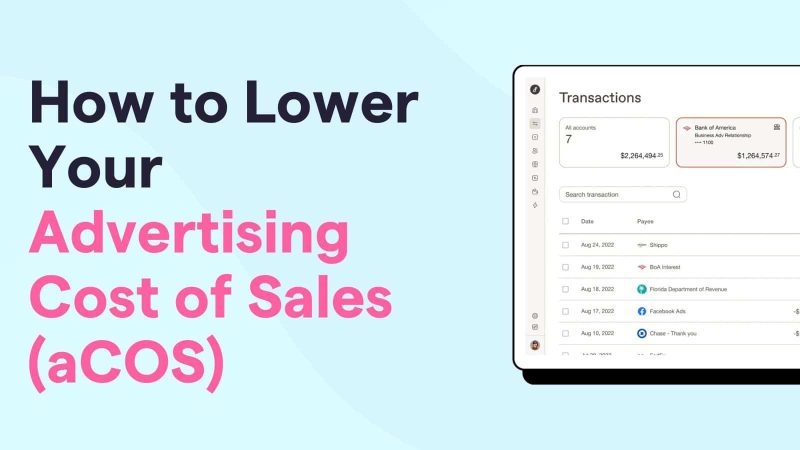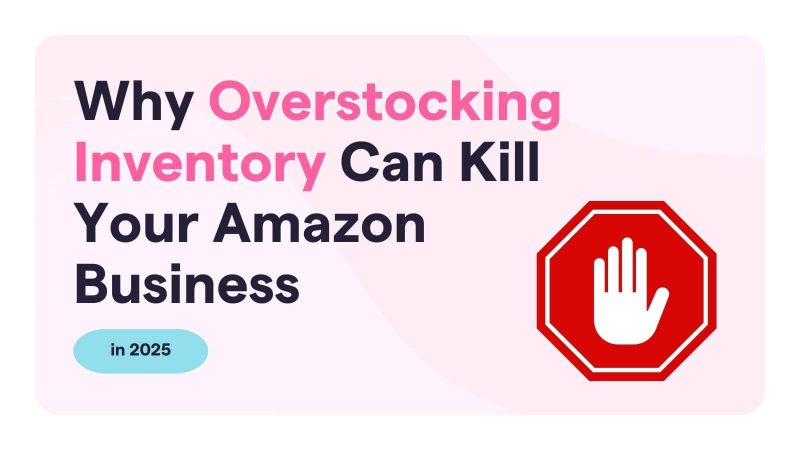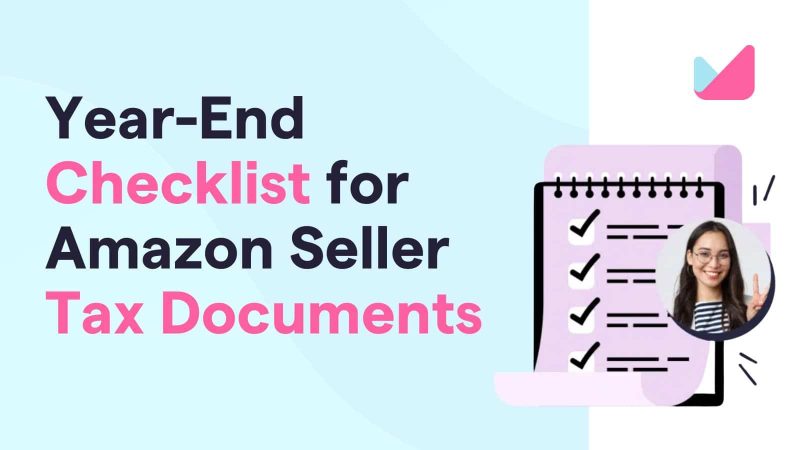There’s nothing more frustrating than being locked out of your Amazon FBA seller account, especially if it’s your main source of income and customers are waiting for their orders to be fulfilled. It is particularly painful when you have seller, buyer and affiliate accounts all under the same login.
Whilst there are a wide range of potential reasons why Amazon might have blocked your account, the process towards getting reinstated generally the same.
In this guide, we take a closer look at some of the reasons why Amazon might suspend your account, how to appeal their decision by creating a plan of action and tips for success in getting your affairs back to normal as soon as possible.
The status of your Amazon account
Every seller account on Amazon can be categorized in one of six ways:
- Active – your listings are live and all systems are go.
- Inactive – if you put your account on holiday, it will be classified as inactive. Basically, this means that there is nothing wrong with your account but it’s just not being used at the moment.
- On hold – if Amazon needs to verify information before approving your account (such as bank information), they will temporarily put it on hold. If you are in this situation, it is best to wait for further information.
- Blocked – this generally means that someone has tried to gain access to your account by attempting to hack you. To get back into your account, “you will have to show that you are the person that is authorized to use the account”.
- Deleted – if you voluntarily choose to close your account, it cannot be recovered. For more information about the implications of removing your account, check out this article.
- Suspended – if Amazon deems that you have violated their terms of service or policies, your account will be suspended and will no longer be able to use it.
Most sellers that ask the question ‘how do I recover my locked Amazon account’ are facing issues of their account being suspended or blocked.
Reasons for account suspension
There are an extremely wide range of potential reasons why Amazon might suspend access to your account. Before going into some of these reasons, it’s important to make a distinction between seller accounts and customer accounts – the reasons for having your account suspended are different, depending on which side of the transaction you sit.
Common reasons for selling accounts to be suspended:
- Selling a restricted product without prior approval.
- Intellectual property infringement.
- Manipulating reviews.
- Operating multiple seller accounts under different logins (you are only allowed to have one).
- Violating Amazon’s seller policies.
- Poor performance based on Amazon’s required seller performance metrics:
- Order defect rate less than 1%
- Pre-fulfilment cancel rate less than 2.5%
- Late shipment rate less than 4%
Common reasons for customer accounts to be suspended:
- Returning too many products under Amazon’s a-to-z guarantee.
- Using a credit card that doesn’t match up with your account details.
- Overuse of Amazon gift cards (an indication of money laundering).
- Attempted hacks – which results in a blocked account until you can prove that you’re authorized to access the account.
“In a recent statement, Amazon mentioned that they are forced to close accounts when they detect extreme abuse [of customer privileges] but it only happens after they carefully review the account and work with the customer over an extended period of time.”
Unfortunately, if you have a seller account and a customer account under the same login and one of them gets banned, you will lose access to all accounts within your Amazon profile.
If you’re wondering ‘why Amazon blocked my account’ or thinking that ‘Amazon closed my account for no reason’, it’s important to remember that Amazon doesn’t just close accounts without cause – after all, they are in the business of making money…
Warning or suspension letter
If you have violated Amazon’s terms of service, they will often send you a warning letter before suspending your account. If you’re fortunate enough to find the warning letter before any further action is taken, make sure to research what you did wrong, fix it and let Amazon know the measures you have taken to resolve the error and prevent it from happening again in the future.
If your account is suspended or blocked, you will need to read through the letter and find out why they barred your account. Once you find this information, it’s a good idea to dig further into the reasons behind your suspension and find out exactly which rule(s) you have violated.
Account suspensions are carried out by bots that freeze accounts based on specific trends. Sometimes, these algorithms make mistakes. It is therefore possible that your account might have been falsely suspended.
However, this possibility should only be considered if you have exhausted all other options. In other words, blaming Amazon for the problem isn’t going to resolve the issue(s) at hand.
Appealing Amazon’s decision
Once you have a detailed understanding of exactly why your account has been suspended and taken adequate measures to prevent it from happening again, it’s time to get in touch with Amazon.
Creating a plan of action
“A key element to appealing your Amazon account suspension is creating a plan of action (POA) to resolve the issue. Amazon reviews this plan and uses the information you provide to decide whether or not to lift the suspension. So needless to say, it is critical to get this piece right.”
A successful plan of action will be compelling enough to convince Amazon that you are ready to continue selling on the platform. This involves:
- Clearly identifying the issue and what caused it.
- Explaining what needs to be done to prevent this from happening in the future.
- Showing that you are taking the necessary steps to ensure that this issue doesn’t happen again.
This involves more than just apologizing for your mistake. Amazon needs to see how you are changing your processes, tools and systems to prevent the problem from repeating.
When writing your plan of action, make sure to use specific language – avoid broad terms like ‘sometimes’, ‘maybe’, and ‘few’. Where possible, include quantities, timeframes and evidence. Amazon is a data driven company, and they place a high level of importance on figures and evidence to back up your promises.
Writing your plan of action
The best POA’s are short and sweet. Amazon’s staff are generally very busy, and they don’t have time to read your life story. As a general pointer, it is best to get straight to the root cause of the problem and focus on resolving the issue at hand.
Here’s a simple yet effective POA template that Salesbacker created which summarizes the key points Amazon needs to know:
Part 1: Introductory paragraph
State who you are (including seller name), a brief description of your business and why your account was suspended.
Part 2: Description of the issue
Clearly describe the issue(s) that resulted in your account being suspended. Explain the research process you used to identify the issue and a detailed explanation of why the problem occurred. Remember to include data and details to back up your findings.
It’s important to take full responsibility for the problem and demonstrate that it is your issue to solve – not theirs. Even if you feel that it is Amazon’s fault, you’re better off to ‘take it on the chin’ and move forward.
Part 3: Action steps
Discuss the steps that you have already taken to correct the issue since being suspended. Clearly describe the changes that you and your team have made to fix the problem and prevent it from happening again. If you have changed your tools or procedures, make sure to explain these details.
Part 4: Closing statement:
Provide a summary of the actions taken to resolve the issue(s) at hand. Remember to include a clear request to have your seller privileges reinstated.
Submit your plan of action
Once you have written and reviewed the POA, follow these steps to submit it with Amazon:
- Log into Seller Central, navigate to the ‘Performance’ menu and click on Performance Notifications.
- Find the suspension notice that you received, click the ‘Appeal’ button and then click ‘Appeal Decision’.
- Enter your POA into the form provided. Include your best contact phone number for Amazon to reach you if they have any questions.
- Click ‘Submit Appeal’ and your POA will be sent to the Seller Performance team for review.
- Once you’ve sent the POA, call Amazon’s support staff to ensure that they have received your appeal, and that it is being processed.
- Wait for Amazon to review your situation – they will respond to you with a decision via email. This is normally done within 48 hours.
Tips for success
Whilst every situation is different, these pointers are general advice to help you along the way:
- Be persistent, but patient. Don’t show any anger or frustration towards Amazon’s staff – they hold all the cards, and can easily deny your reinstatement if you are rude or pushy.
- Don’t submit an appeal immediately after being suspended. Take the time to research what went wrong, put a solid POA in place and take actions to remedy the situation.
- Make sure that you have a clear understanding of which rules you violated before putting measures in place to fix the situation.
- Every time you contact Amazon, this is treated as a separate appeal. If you submit too many appeals without taking appropriate actions to fix the situation, your account will be permanently blocked. Get your POA right before contacting Amazon.
- Ensure that your language is facts-based and don’t let emotions interfere with the process.
If you have done all of the above and nothing has worked, email jeff@amazon.com – this email address is managed by an executive support team that has more authority to deal with persistent problems.
Amazon accounting made easy
We hope that this guide has been helpful in getting your seller account and business operations back to normal.
MuseMinded is a modern cloud accounting firm based in the United States. We are dedicated to helping Amazon sellers grow their businesses and simplify their lives at the same time.
By combining the best eCommerce accounting talent, automation technology and smart integrations, we provide full service Amazon accounting packages to switched on digital entrepreneurs that want to free up their time to focus on other things. Click here to find out more about how we can help.




